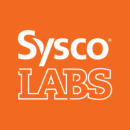Engineers working with Closinglock’s Director of Engineering Caleb Richard have a unique opportunity to shake things up every quarter — by walking a mile in Richard’s shoes.
Through what Richard calls “reverse one-on-ones,” he allows his direct reports to temporarily take on the role of manager while he becomes the direct report. This role reversal imparts useful wisdom to both parties and fosters a more trusting relationship — with the added benefit of bonus managerial experience for direct reports.
Richard’s unusual approach to team building underlines the positive impact of transparency and trust between managers and their reports. Richard engenders his team’s trust by trusting and respecting his team to see things from his perspective. And employees who have trust in their management are more engaged, productive and likely to go the extra mile in the workplace, according to Harvard Business Review.
Leaders like Richard are using exciting and creative methods to make magic happen. Built In Austin spoke with Richard and Sysco LABS Scrum Master Colin Turner to hear about the rituals and principles they use to keep their teams moving forward.
Closinglock is a real estate tech company focused on simplifying the real estate closing experience for all parties.
Tell us about a unique principle, habit or ritual that differentiates your approach to engineering. When did you start doing this?
With all my team members, I do a quarterly “reverse one-on-one.” Most people will be familiar with holding one-on-one meetings with direct reports — the goal is typically to give time and space to discuss anything they’d like. The range of topics is broad and includes current projects, interpersonal work relationships, career goals, team process feedback and much more. Many engineering leaders will know that these one-on-ones are crucial for understanding where each member of your team is at, how they are feeling and what things might need to change for the betterment of team health.
The reverse one-on-one is exactly what it sounds like. I ask my direct reports to conduct a one-on-one in which they act as my manager, and I bring issues, struggles and team feedback to the table. I started doing this two years ago after one of my team members asked for mentorship on leveling up their leadership skills while still being in an individual contributor role.
What differences did you notice after you adopted reverse one-on-ones in your work?
After starting reverse one-on-ones, I noticed that team members felt more comfortable bringing up issues after seeing me be transparent and vulnerable about the challenges in my role.
It gives precedent to engineers who did not have had one-on-ones in previous roles regarding the scope of topics they could, and should, bring up during these meetings — it’s not just 30 minutes to discuss work projects. I’ve seen team members finding our regular one-on-ones much more rewarding after learning they can bring more complex or in-depth topics to the table other than how their current work is going.
“I’ve seen team members finding our regular one-on-ones much more rewarding after learning they can bring more complex or in-depth topics to the table.”
This practice also gives tangible experience to engineers looking to move into management positions, where they would often need to conduct this style of meeting. Along with real issues and topics I want to discuss, I’ll go through simulated conversations for team members who would like to progress in a management route, such as “I feel like I’m being undervalued in my compensation,” or “I’m struggling to work with another team member and feel like I’m having to take up their slack.” This gives them a low-stress environment to think through how to approach these conversations.
What does this approach to engineering help you and your team accomplish?
I want to foster a culture of transparency and openness in my teams. The reverse one-on-one is a great platform that gives me dedicated time with each team member to lead by example. It helps level up the team by providing management-level experience. This process also helps me become a better leader by learning from interesting prompts and responses to the issues that my incredible team at Closinglock brings up. For such a simple practice that is easy to implement, I have been incredibly happy with the growth and culture it has brought.
Sysco LABS uses customer and market intelligence, data-driven insights and agile technology development to reimagine foodservice through innovation.
Tell us about a unique principle, habit or ritual that differentiates your approach to engineering. When did you start doing this?
When I got back from working in Japan, I joined a startup and began looking into quality and governance methodologies like CMM, Carnegie Mellon, Sarbanes Oxley and Six Sigma, of which Six Sigma immediately stood apart as tapped into deep wisdom.
Six Sigma led me to Toyota governance methods, where I learned the pillars of organizational success: continuous improvement and respect for people. When planning long-term, “Is this respectful of our co-workers?” is never a misplaced question. It is essential. And Toyota will get you started on the principle, practice and discipline of flow.
Not all aspects of work are equally useful to focus on, but some yield far-reaching benefits, and by making flow the focus of visualizing, measuring and improving your system, you find traction.
SYSCO LAB’S FLOW METRICS
- Work in Progress — How many items your team has in flight
- Throughput — Item delivery rate
- Item Aging — Awareness of oldest work items that are still in progress
- Cycle Time — Total time to complete a work item
When all options bring problems to solve, choose the one that best promotes flow. It is not a workaround for doing the hard work of growth, but it is a direction to work towards.
What differences did you notice after you adopted a flow mindset?
To quote one of the Toyotas, “The constant struggle is to see.”
We can be blinded by the edifice of the system, so we constantly fail to question and improve it. The system of our work is the water we’re immersed in — everything, yet transparent to us, though we feel its invisible currents. To see clearly, it is necessary to drop instruments into those currents, like limiting work in progress.
“If we try to do everything, we’ll accomplish nothing” sounds obvious, but limiting work in progress often proves unintuitive, and brings up challenging ideas like Slack: that systems process the same body of work faster when run below capacity.
When my team constrained the number of open items and worked strictly from right to left on their board, they began to see the bigger picture more clearly. When we own each work item collectively, the minimum viable product statistic becomes the standard, creating an informed enthusiasm for breaking work into smaller pieces that can be picked up and closed by the next available person.
When we embraced rightsizing — we stopped estimating the size of work and started controlling it — each member stopped digging their own well and the team became a bucket brigade. That’s flow.
“When we embraced rightsizing, each member stopped digging their own well and the team became a bucket brigade.”
What does this approach to engineering help you and your team accomplish?
We can offer predictability to the business while also experiencing sustainable working methods. We can eliminate context-switching. Through something called “pull,” we can natively balance capacity and demand.
We can confirm that customers want a feature while building it, choose as we go whether to fund further development or cheaply abandon it. It is a huge win for the business and incredibly empowering for UX and product teams.
We’re early in the journey. But by taking it together and building processes incrementally — in a way suited to local conditions — we can understand the meaning behind the methods we consciously adopt and build front-line competence for problem-solving and change, rather than falling into the trap of trying to replicate someone else’s success by replicating their methods.









